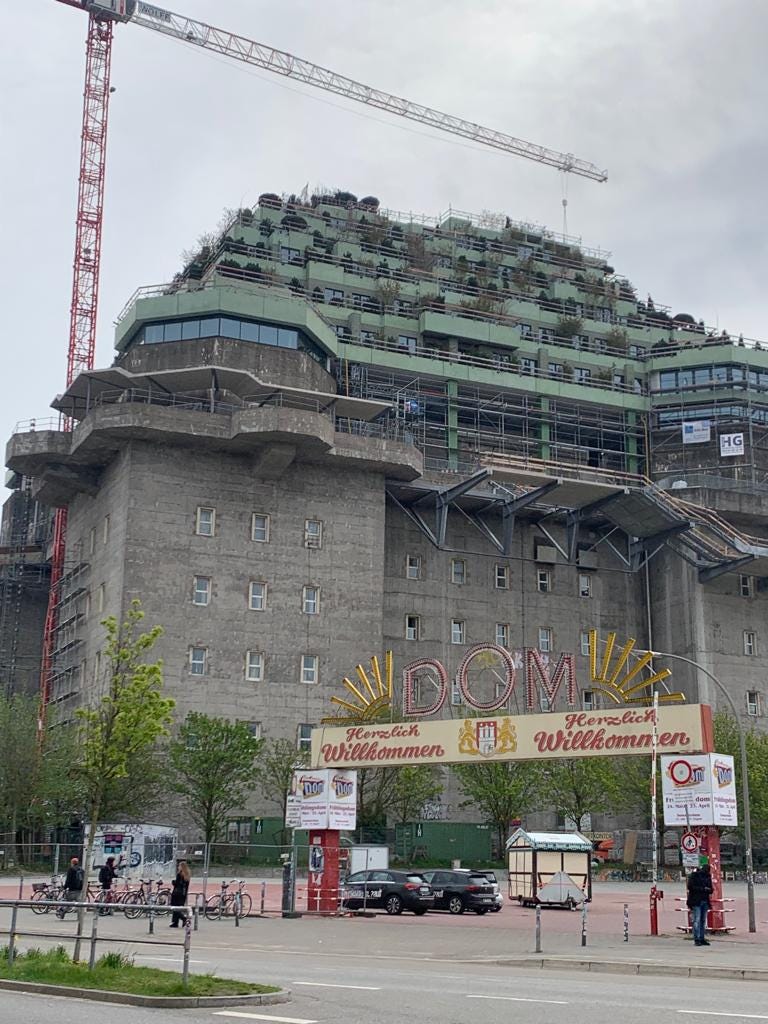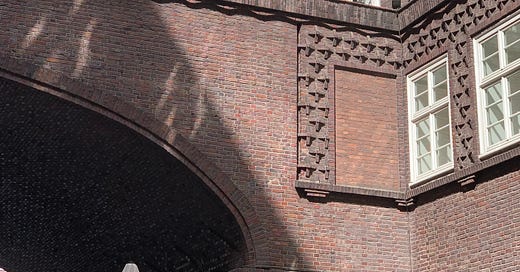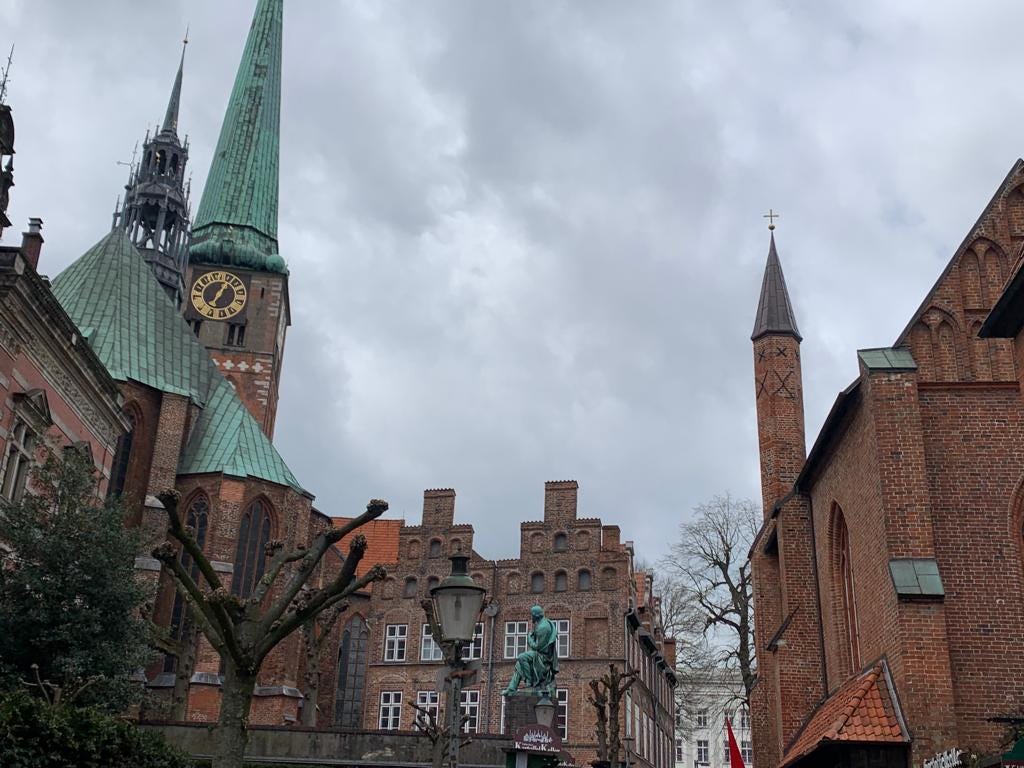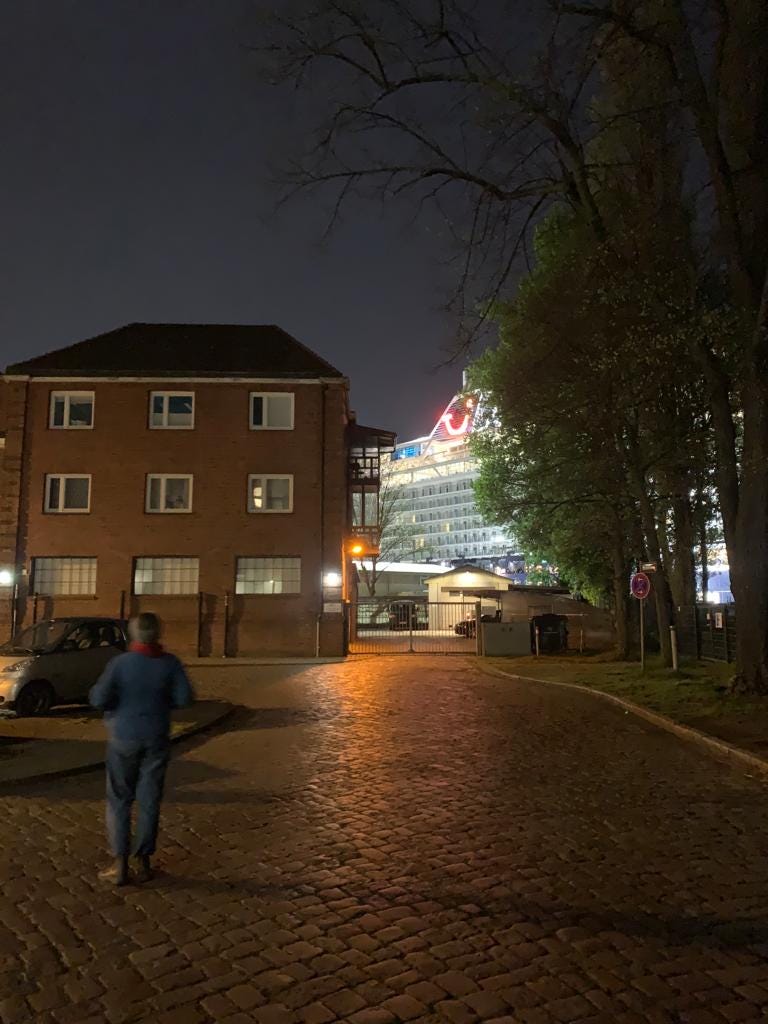A Profile of Hamburg
In which I attempt to understand a city of 1.9 million people after three nights
Hamburg has been on my radar for some time, ever since watching Jonathan Meades’ Magnetic North. Yes, I’m aware this is the second time I’ve mentioned that ‘documentary’ show on this platform—and I’m fully aware of the tediousness of being confronted with someone else’s fandom in a written format. Well, at least I bring up Magnetic North in order to push back against its description of the city.
The whole point that Hamburg features in that documentary is to serve Meades’ general argument that the Hansa was a proto-EU cosmopolitan economic bloc which would be secular and humanist if only they were not tied by the chains of late-Medieval Christianity. Hamburg retains its cosmopolitan, liberal flair, Meades argues.
I can attest to the truth of Hamburg’s worldliness in every sense. It does indeed feel materialistic, muscular, faced-paced, wealthy (in parts), and international. But it has drifted—or perhaps I should say propelled itself—far and away from the other members of the Hanseatic league. I’m thinking here of the utterly gorgeous museum pieces that Lübeck, Stralsund or Bremen exemplify. You can also add the Gothic feverdreams of Ghent and Bruges to this list as far as I’m concerned, even though they’re not really Hanseatic cities.
The point is, the latter cities exemplify tremendous riches found in the late Middle Ages and irrelevance after them. They brought in English wool, Asian spices and Arabic resins by sail. They traded them to the rest of Europe and they built great cathedral and Burgher houses out of the cash that was left behind. Then, as things got more and more competitive, and technologies came, they declined. An interesting paper I intend to read quite soon accounts how the chummy guild structures of Lübeck’s trading port was the reason for its downfall compared to the more cutthroat economic environment of Hamburg.

Hamburg stands apart. Hamburg was a maritime superpower of its day. Crucially, it continues to be a maritime superpower. A short walk through Reeperbahn (I’ll explain that place in a bit) in the centre of the city takes you to the waterside. Here, you’ll see TUI branded cruise ships of scale which contest the buildings of the city, and often win. That’s a cliche when talking about the size of boats, but I’m afraid it’s a good one. From certain viewpoints it is genuinely unclear that these towerblocks are floating without foundations.
Even bigger, even brasher, even more brutalist, are the container ships. I confess I only saw one travel through the Elbe, but it was enough. The spectacle of something the size of a small mounting moving cheerfully along like a giant, fast slug, was thrilling. These things are enormous. They are, like, really, really big. Currently, sea-based transport accounts for somewhere between 40% and 55% of all global freight. If you take the latter percentage on board, that means that shipping accounts for more goods moved around the planet than rail and road combined.
As simple and blunt as the technology is, the world’s economies rely on boats. In an age of Bay-Area dominance, AI paranoia and future shock, thumping big boats are still important—perhaps as important as money itself.
The aesthetics of this bigness and its economic consequences do not make for a picturesque city. The wealth which continued to flow in Hamburg but which dried up in Lübeck and Bremen in the 18th and 19th centuries, created a pressure to modernise. Roads get bigger, buildings are rebuilt (before they burn down, and in Hamburg there was a major fire in the 19th century).
Indeed the principle reason that places ‘look historical’ is not because they once were prominent, but because at some point in the more recent past, they ceased to be prominent. This is exactly the case with a town like Lavenham in Suffolk, which was pretty ‘minted’ in the late medieval period and is filled with beautiful timber buildings. By virtue of its latter-day poverty, the town escaped the devastation which can often be delivered by restoration, renovation and renewal. Haussmann wouldn’t have bothered with his wholesale reconstruction of Paris were Paris an economic backwater. If that were the case, we’d know what medieval Paris looked like with somewhat more clarity.
Another way of putting this is that, where places have an unbroken tradition continuing into the present day, one better expect that tradition to have changed—almost beyond recognition. I often think that English parish churches have a great deal more ‘medieval’ authenticity about them than do Spanish or French ones, because the accumulation of images was stopped dead by the chaos of the reformation after Henry VIII and the second wave of iconoclasm engendered by the English Civil War. There are more peculiar ironies to be found on this topic, such as the fact that rood screens were eliminated wholesale by the Catholic Counter-Reformation while the OG Reformation in England left many fine examples intact. On the other hand, the freezing-in-amber of image-making in churches is anathema to the actual traditions and doctrines of the Catholic Church that made those images in the first place.
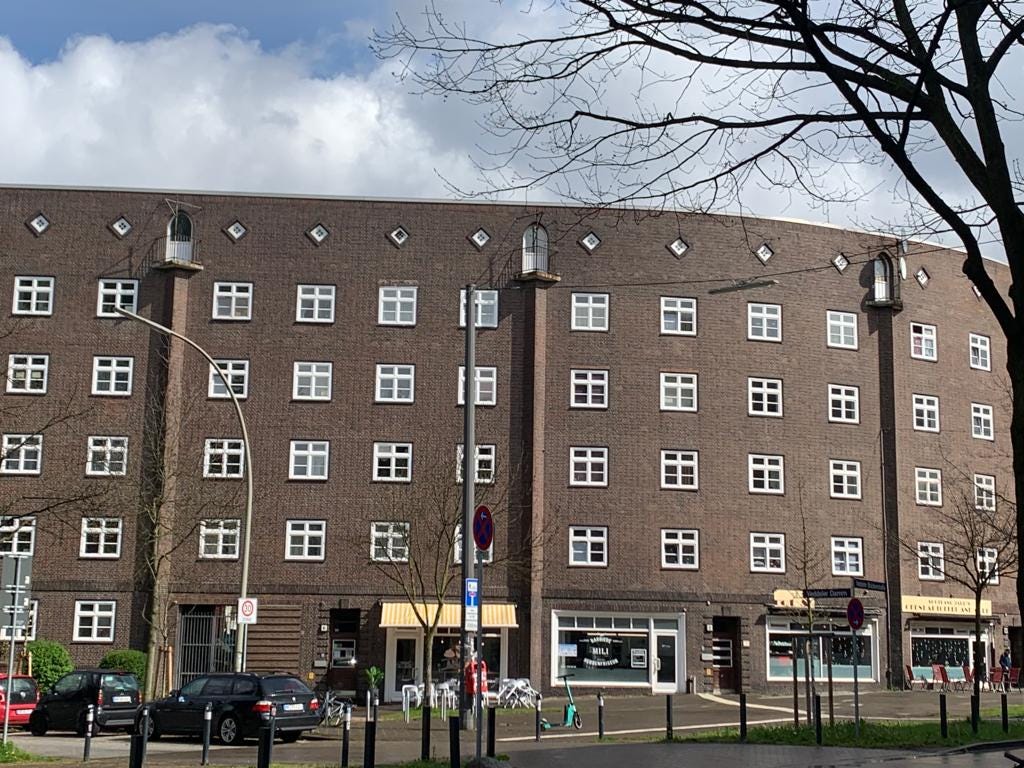
In Hamburg there are just enough shreds of tradition left behind to remind one of the longer history of the place. These bits of history also serve to enhance the perversity and surrealism of the change over time. Without leaving the city one can move to a rare fragment of Brick Gothic (rare for Hamburg that is) at Hauptkirche St Katherinen and a street which is lined with plastic and neon clad brothels where ropes used to be made: the ‘ropewalk’ or Reeperbahn. ‘The Oldest Profession’ is a fairly tired epithet but there is a touch of truth to it insofar as it has been around for some time as a form of work. Its reputed connection with sailors and ports is also rather well-trodden.
The juxtaposition one sees at De Walle in Amsterdam between the Oude Kirk and the glazed booths where sex workers sit on stools in limited attire is more immediate but less extreme. De Walle is rather bijou by comparison. In Hamburg the Reeperbahn is a sustained visual shock. One particular brothel has every single window blocked out with hot pink silhouettes of women—like some kind of shady experimental lab. There are grim bars, marked not by their dingy interiors but their interiors lit by interrogation-grade street lights which illuminate rows and rows of vodka bottles.
There is a long side street which moves towards the water, and begins with a police station. Pointedly, it’s here where a row of young women station themselves at regular intervals. If you peer down the street and see about eighteen of them it becomes obvious that they’re waiting for clients, not friends. All of them were wearing outsized Michelin-man puffer jackets in precisely the same style, either white or black—as though the local authority required this as a condition of licence. Many professions like to criticise themselves as having ‘siloed’ thinking, and warn themselves of the danger of groupthink. These jackets were indeed uniforms, but a degree of uniformity in work makes sense: people in the same profession encounter the same problems. I guess the problem here is that Hamburg in April is still really quite cold. These particular puffer jackets clearly solve that problem, while communicating a particular mode of femininity dictated by present fashions.
At the end of this street there is a flight of steps that leads to the waterside. The waterfront is ornamented by a chunky, rough-hewn piece of Hamburg expressionist architecture, the Landungsbrüken port terminal building. This is a woodland-worshiping or rock-worshiping structure if ever there was one, with low arches and irrational, fat columns that open up very little space. The subterranean emphasis becomes submarine with the help of the tiled and equally arty Alter Elbtunnel which links the city on two sides of the Elbe.
All of the above sights can be seen on a single day. The history of the place has to be known ahead of time: the reality of the place doesn’t communicate its own story. Instead it communicates a mad present tense, perhaps with some obscure scar tissues of the past buried within. I can recommend Hamburg. But to enjoy its delights, one has to embrace a little perversity.
